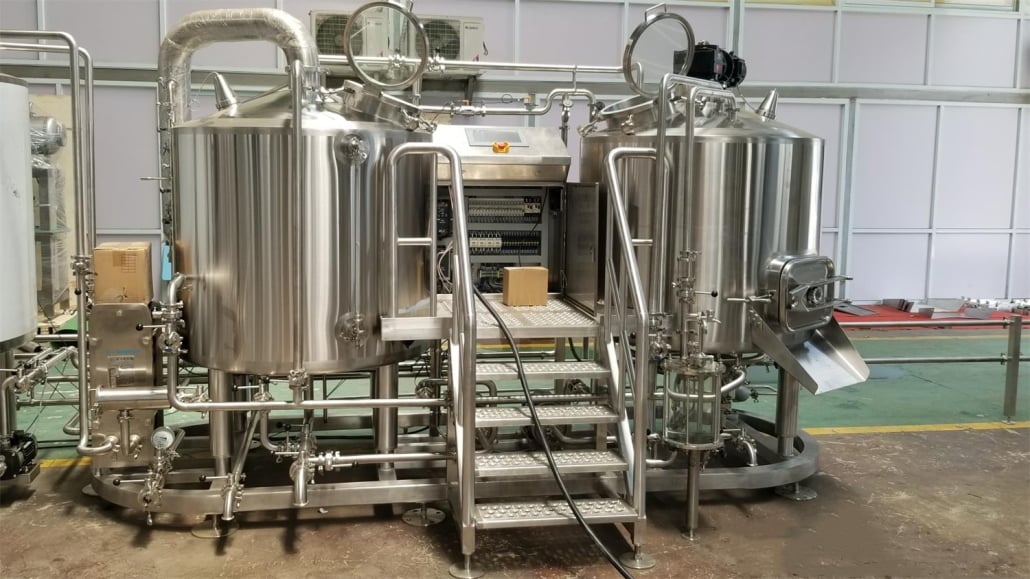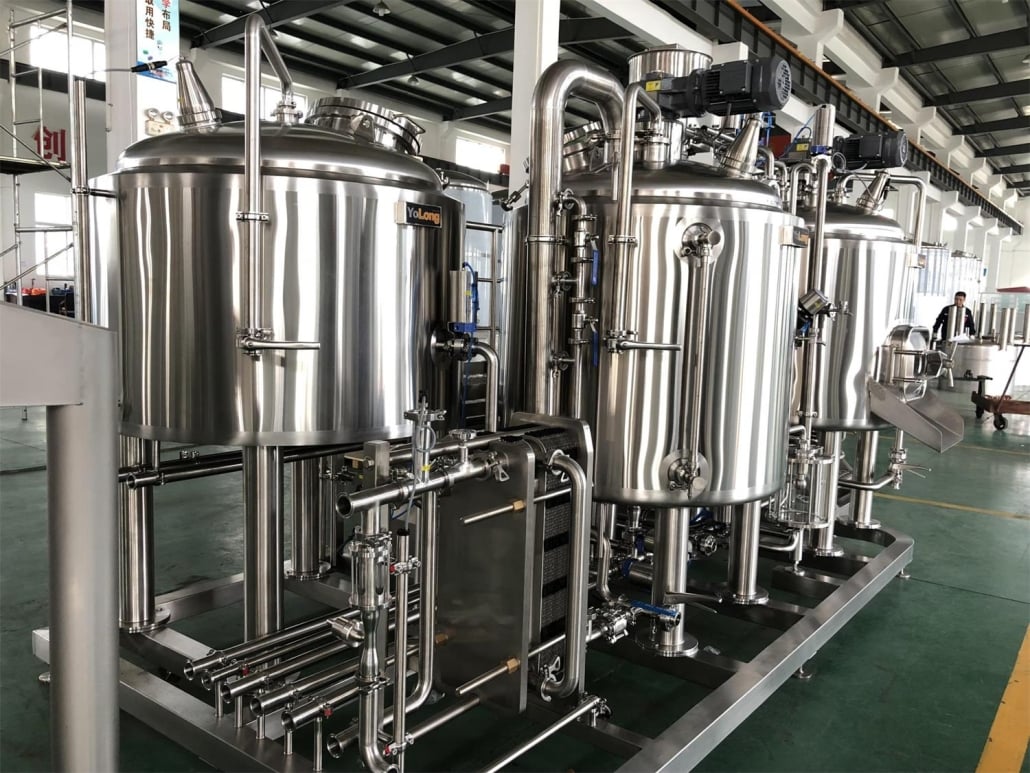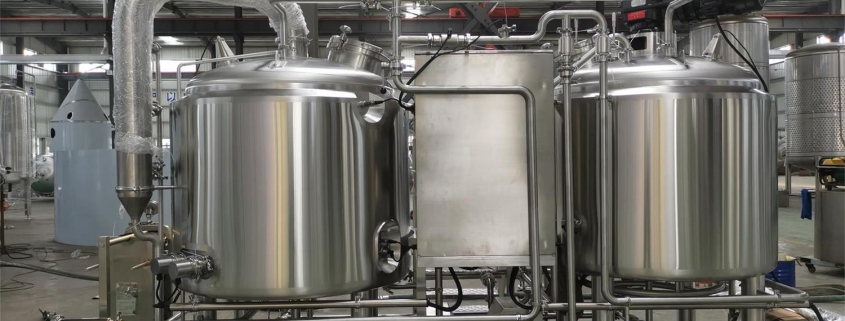Craft Micro Breweries
Craft micro breweries have been gaining immense popularity in recent years, catering to the growing demand for unique and locally-crafted beer. These small-scale brewing operations allow for experimentation with diverse ingredients and brewing techniques, resulting in a wide range of flavorful and distinctive beer styles.
Unlike large-scale commercial breweries, craft micro breweries prioritize quality over quantity, dedicating themselves to creating artisanal brews that reflect the brewer’s passion and creativity. With a focus on using high-quality, often locally-sourced ingredients, these breweries offer beer enthusiasts a chance to experience truly unique and authentic flavors.

Craft Micro Brewery Equipment Guide
To establish a successful craft micro brewery, it is essential to have the right equipment. While the specific requirements may vary depending on the brewery’s size and production goals, there are certain core components that every micro brewery needs.
| Equipment | Description |
|---|---|
| Brew Kettle | A large vessel used for boiling the wort (unfermented beer) with hops and other ingredients. |
| Mash Tun | A specialized vessel used for the mashing process, where the grains are soaked and heated to convert starches into fermentable sugars. |
| Fermentation Tanks | These tanks are used for the fermentation process, where yeast converts the sugars from the wort into alcohol and carbon dioxide. |
| Bright Beer Tank | Also known as a conditioning tank, this vessel is used for storing and carbonating the beer after fermentation. |
| Bottling or Canning Line | Depending on the packaging method, a bottling or canning line is required to package the finished beer for distribution. |
| Keg Washer | For breweries that serve draft beer, a keg washer is necessary for cleaning and sanitizing kegs before refilling them. |
| Glycol Chiller | This equipment is used for quickly cooling the wort after the boiling process, preparing it for fermentation. |
| Control Panel | A centralized control panel is used to monitor and adjust various brewing parameters, such as temperature and pressure. |
Brewing Process for Craft Micro Breweries
The brewing process at a craft micro brewery typically follows these steps:
- Milling: The grains are milled or crushed to increase their surface area, which aids in the extraction of sugars during the mashing process.
- Mashing: The milled grains are mixed with hot water in the mash tun, where enzymes convert the starches into fermentable sugars.
- Lautering: The sugary liquid (wort) is separated from the spent grains by draining or filtering through the mash tun.
- Boiling: The wort is transferred to the brew kettle and boiled with hops and other ingredients, such as spices or fruits, depending on the recipe.
- Whirlpooling: After boiling, the wort is whirlpooled to separate the solid matter (trub) from the liquid.
- Cooling: The wort is rapidly cooled using a glycol chiller or a heat exchanger to prepare it for fermentation.
- Fermentation: The cooled wort is transferred to fermentation tanks, where yeast is added to convert the sugars into alcohol and carbon dioxide.
- Conditioning: After fermentation, the beer is transferred to a bright beer tank for conditioning, where it is carbonated and clarified.
- Packaging: The finished beer is then packaged into bottles, cans, or kegs for distribution and consumption.
Craft Micro Brewery Capacity, Spaces, Design, and Layout
| Parameter | Description |
|---|---|
| Capacity | Craft micro breweries typically have an annual production capacity ranging from a few hundred to several thousand barrels (1 barrel = 31 gallons). The capacity is determined by factors such as the size of the brewing equipment, fermentation tanks, and available space. |
| Spaces | A micro brewery requires several dedicated spaces, including a brewhouse, fermentation room, bottling/canning area, storage areas, and a taproom or tasting room for on-site sales and sampling. |
| Design and Layout | The design and layout of a micro brewery should prioritize efficiency, hygiene, and safety. A well-planned layout ensures smooth workflow, proper ventilation, and adherence to health and safety regulations. |
| Customization | Many micro breweries opt for custom-designed equipment and layouts to optimize their brewing process and reflect their brand identity. Customization allows for greater flexibility and the ability to incorporate unique features or brewing techniques. |
Craft Micro Brewery Suppliers and Price Range
When it comes to sourcing equipment for a craft micro brewery, there are numerous suppliers offering a wide range of products and price points. Here are some examples:
| Supplier | Price Range (USD) | Description |
|---|---|---|
| Ss Brewtech | $5,000 – $100,000+ | Offers a comprehensive range of brewing equipment, from small homebrewing systems to large-scale commercial setups. |
| Craft Brew Supply | $2,000 – $50,000+ | Specializes in providing affordable equipment and supplies for craft breweries of various sizes. |
| Blichmann Engineering | $3,000 – $30,000+ | Known for their high-quality, American-made brewing systems and accessories. |
| Braumeister | $5,000 – $20,000+ | Offers a range of compact and efficient brewing systems suitable for small-scale operations. |
| Brewers Hardware | $2,000 – $80,000+ | Provides a wide selection of brewing equipment, including kettles, fermenters, and packaging lines. |
Please note that these price ranges are approximate and may vary based on the specific equipment configurations and customization options.

Installation, Operation, and Maintenance of Craft Micro Brewery Equipment
| Aspect | Description |
|---|---|
| Installation | Proper installation of brewing equipment is crucial for ensuring safe and efficient operation. Many suppliers offer installation services or provide detailed installation guides. Factors such as floor drainage, ventilation, and electrical and plumbing requirements must be considered. |
| Operation | Operating a micro brewery requires extensive knowledge of brewing processes, recipe formulation, and equipment functionality. Thorough training and adherence to standard operating procedures are essential for consistent product quality and safety. |
| Maintenance | Regular maintenance is vital for extending the lifespan of brewing equipment and ensuring consistent performance. This includes cleaning, sanitizing, and inspecting components for wear and tear. Preventive maintenance schedules and proper record-keeping are recommended. |
Choosing a Supplier for Craft Micro Brewery Equipment
When selecting a supplier for your craft micro brewery equipment, consider the following factors:
| Factor | Description |
|---|---|
| Reputation and Experience | Look for suppliers with a proven track record in the brewing industry and positive customer reviews. Experienced suppliers can provide valuable guidance and support. |
| Product Quality | Prioritize suppliers that offer high-quality, durable equipment designed for commercial brewing applications. Quality materials and construction can impact the longevity and performance of the equipment. |
| Customization Options | If you require specialized equipment or unique configurations, consider suppliers that offer customization services to meet your specific needs. |
| Support and Services | Evaluate the level of customer support and additional services offered by suppliers, such as installation assistance, training, and maintenance support. |
| Delivery and Shipping | Consider the supplier’s location and shipping capabilities, as well as any associated costs and lead times for delivery. |
| Warranty and Guarantees | Review the warranty and guarantee terms offered by suppliers to ensure you have protection against defects or issues with the equipment. |
Pros and Cons of Craft Micro Breweries
| Pros | Cons |
|---|---|
| Unique and Distinctive Beers: Craft micro breweries have the flexibility to experiment with different ingredients and brewing techniques, resulting in truly unique and flavorful beers. | Limited Production Capacity: Due to their small-scale operations, craft micro breweries have a limited production capacity, which can make it challenging to meet high demand. |
| Local and Authentic Experience: Many craft micro breweries focus on sourcing local ingredients and reflect the local culture and traditions in their brews, providing an authentic and community-driven experience. | Higher Operating Costs: The smaller scale and emphasis on quality ingredients can result in higher operating costs for craft micro breweries compared to larger commercial breweries. |
| Taproom and Tasting Opportunities: Many craft micro breweries offer on-site taprooms or tasting rooms, allowing customers to sample and purchase beer directly from the source. | Distribution Challenges: With limited production and often a local focus, craft micro breweries may face challenges in achieving widespread distribution beyond their immediate geographic area. |
| Passion and Creativity: Craft micro breweries are often driven by passionate brewers who are dedicated to their craft and constantly innovating with new recipes and brewing techniques. | Regulatory Compliance: Micro breweries must navigate various licensing, permitting, and regulatory requirements, which can be complex and vary by location. |
| Quality Focus: With a focus on quality over quantity, craft micro breweries prioritize using high-quality ingredients and ensuring meticulous attention to detail in the brewing process. | Competition and Market Saturation: As the craft beer market continues to grow, craft micro breweries may face increasing competition from both larger breweries and other small-scale operations. |

Choosing the Right Craft Micro Brewery for Your Needs
When it comes to choosing a craft micro brewery, there are several factors to consider based on your preferences and priorities:
- Beer Styles: Assess the brewery’s beer portfolio and determine if they specialize in the styles you prefer or offer a diverse range of options.
- Atmosphere: Visit the brewery’s taproom or tasting room to get a sense of the atmosphere and ambiance. Consider whether it aligns with the experience you’re looking for, such as a lively or cozy setting.
- Location: Proximity is often a consideration, especially if you plan to visit the brewery frequently. Alternatively, some beer enthusiasts may be willing to travel for a unique or highly acclaimed brewery.
- Events and Activities: Some craft micro breweries host regular events, such as live music, trivia nights, or brewery tours, which can enhance the overall experience.
- Food Options: If you enjoy pairing beer with food, evaluate the brewery’s food menu or food truck offerings to ensure they align with your culinary preferences.
- Sustainability and Community Involvement: For those who prioritize environmental and social responsibility, research the brewery’s sustainable practices and community involvement initiatives.
- Awards and Accolades: While not a definitive measure of quality, awards and recognition from respected beer competitions or publications can indicate a brewery’s commitment to excellence.
- Pricing: Consider the pricing of the brewery’s beers, especially if you plan to visit or purchase frequently. Ensure that the prices align with your budget and perceived value.
Remember, the right craft micro brewery for you is ultimately a matter of personal preference and finding a brewery that aligns with your tastes, values, and desired experience.
FAQs
| Question | Answer |
|---|---|
| What is the difference between a craft brewery and a micro brewery? | While often used interchangeably, there is a distinction between craft breweries and micro breweries. Craft breweries are defined by their small, independent, and traditional brewing methods, while micro breweries specifically refer to breweries with an annual production of fewer than 15,000 barrels. Most micro breweries are considered craft breweries, but not all craft breweries are micro breweries. |
| How much does it cost to start a craft micro brewery? | The cost of starting a craft micro brewery can vary significantly depending on factors such as the size of the operation, equipment needs, location, and licensing requirements. Generally, startup costs can range from $250,000 to $1 million or more. |
| What licenses and permits are required to operate a craft micro brewery? | The specific licenses and permits required may vary by location, but common requirements include a federal Brewer’s Notice, state brewing license, local business licenses, and permits related to zoning, health, and safety regulations. |
| Can craft micro breweries sell their beer outside of their taproom or brewery? | Yes, many craft micro breweries distribute their beer to local bars, restaurants, and liquor stores in addition to selling directly from their taproom. However, distribution channels and regulations can vary by state and locality. |
| How do craft micro breweries ensure consistent beer quality? | Consistent beer quality is achieved through meticulous attention to detail throughout the brewing process, adherence to standard operating procedures, and rigorous quality control measures. This may include strict temperature control, precise ingredient measurements, and regular testing and sampling. |
| Can craft micro breweries produce a wide variety of beer styles? | Yes, one of the advantages of craft micro breweries is their ability to experiment with different ingredients and brewing techniques, allowing them to produce a diverse range of beer styles, from traditional to innovative and experimental. |
| What is the typical shelf life of craft micro brewery beers? | The shelf life of craft micro brewery beers can vary depending on the specific beer style and packaging method. Generally, bottled or canned beers can last for several months, while draft or kegged beers have a shorter shelf life of a few weeks to a few months. Proper storage and handling are crucial for maintaining quality. |
| How can I find craft micro breweries in my area? | There are several resources available for finding craft micro breweries in your area, such as online directories, beer enthusiast forums, and local beer blogs or publications. Additionally, many breweries have a strong social media presence, allowing you to discover and connect with nearby breweries. |













